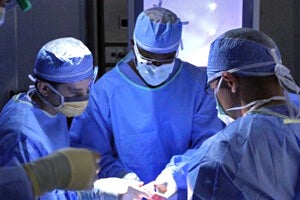Mar.11, 2014
Written By: Cameron Scott
"If 3D printers, or additive manufacturing, can produce custom replacement parts for machines, why couldn't the same process create biodegradable tissue repair structures for the human body?
Researchers from the University of Pittsburgh's Swanson School of Engineering and McGowan Institute for Regenerative Medicine (MIRM) have proposed project "Additive Manufacturing of Biomedical Devices from Bioresorbable Metallic Alloys for Medical Applications" to explore 3D-printed bone and tissue scaffolds. "
Google Glass Makes Its Way Into Operating Rooms
Written By: Cameron Scott
Posted: 12/1/13 8:24 AM
"Hands-free devices like Google Glass can be really transformative when the hands they free are those of a surgeon. And leading hospitals, including Stanford and the University of California at San Francisco, are beginning to use Glass in the operating room."
Eric Topol: The wireless future of medicine
"Eric Topol says we'll soon use our smartphones to monitor our vital signs and chronic conditions. At TEDMED, he highlights several of the most important wireless devices in medicine's future — all helping to keep more of us out of hospital beds"
Non-invasive blood glucose monitoring using near-infrared spectroscopy
Masab Ahmad, Awais Kamboh & Ahmed Khan - October 16, 2013
"...An alternative exists in non-invasive blood glucose monitors. This article introduces an architecture that uses Near Infrared (NIR) spectroscopy to determine blood glucose levels based on transmittance spectroscopy on the ear lobe. Using various body parameters, such as tissue thickness, blood oxygen saturation, and a linear regression-analysis based calibration system, an accurate and real-time architecture is proposed. An example implementation using full analog, digital, and mixed signal capabilities of a programmable system-on-chip, the PSoC-5LP controller from Cypress, is given as well...."
 |
| Figure 1 High Level System Diagram |




